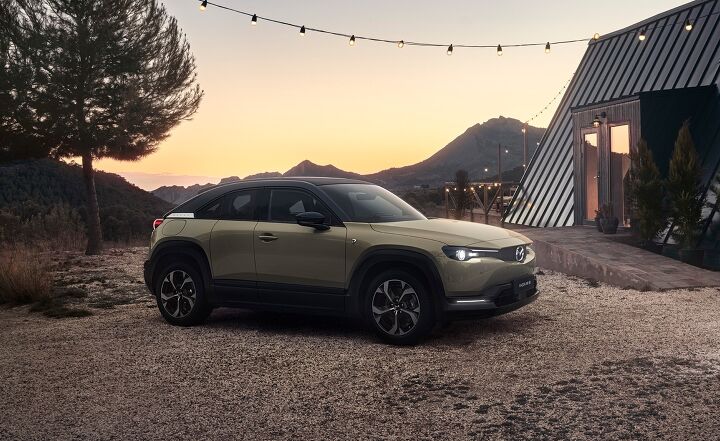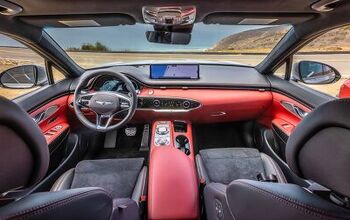The Mazda MX-30 R-EV Adds A Rotary, Turns An EV To A PHEV

A rotary engine aims to boost the driving range of Mazda’s low-range EV.
The Mazda MX-30 makes the jump from EV to PHEV, or more specifically, range-extended EV. Unveiled at the Brussels Motor Show, Mazda has released details of its rotary-powered MX-30, now officially called the Mazda MX-30 R-EV.
The MX-30 R-EV is a series hybrid, meaning, the rotary engine isn’t connected to the wheels, it’s solely intended to recharge the batteries. The MX-30 R-EV has a smaller battery, only 17.8 kWh, down from the 35.5 kWh from the pure electric model. With the reduced battery size, Mazda has fit a 50L (13.2 gallons) gas tank, greatly increasing the car’s driving range. In principle, the MX-30 R-EV is very similar to the Chevrolet Volt, or BMW i3.
Mazda hasn’t said anything about the MX-30’s price, power, new combined driving range, or fuel economy. As it stands, it’s likely that the MX-30 R-EV likely will be powered by the same 143-horsepower electric motor powering the front wheels. The MX-30 will support both AC charging and DC fast charging, although speeds for both haven’t been specified.
Also, the MX-30 R-EV will be offered in a special edition, dubbed “Edition R.” The black car will have accents in Maroon Rouge Metallic, a color inspired of the classic Mazda R360 coupe. Inside, rotary logos will adorn the seats and floormats.
The Mazda MX-30 R-EV should go on sale in Europe very soon, but details for North America have not been announced.
Become an AutoGuide insider. Get the latest from the automotive world first by subscribing to our newsletter here

Kevin has been obsessed with cars ever since he could talk. He even learned to read partially by learning and reading the makes and models on the back of cars, only fueling his obsession. Today, he is an automotive journalist and member of the Automotive Press Association. He is well-versed in electrification, hybrid cars, and vehicle maintenance.
More by Kevin Williams



































Comments
Join the conversation
Great concept, not far off from, say, using a gas turbine to keep a battery charged in a hybrid car, but probably less expensive to build. In either case, you avoid constant changes in engine speed and output.